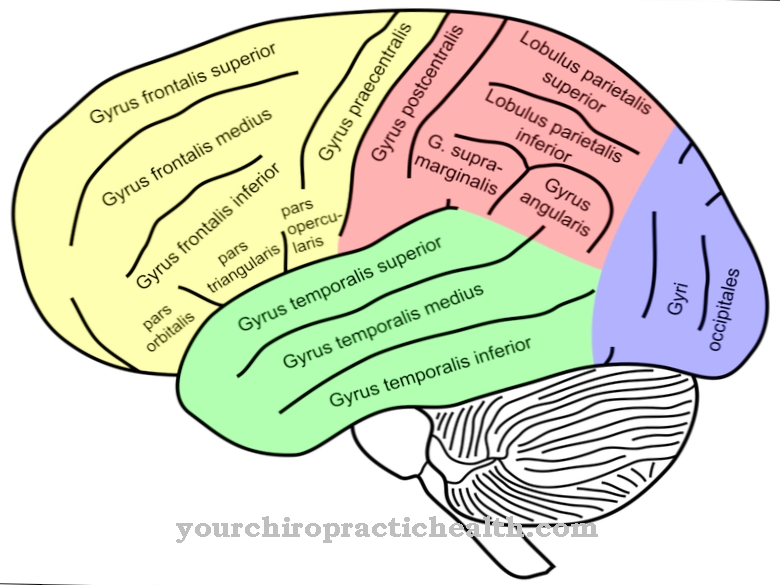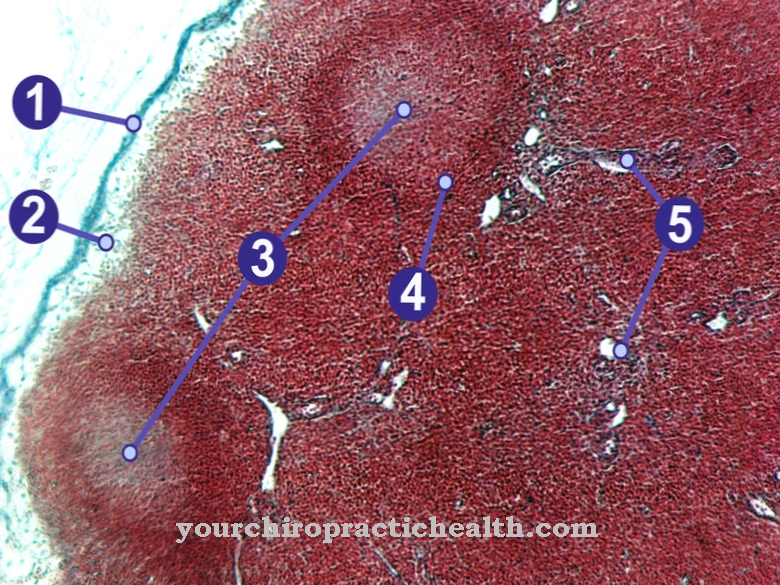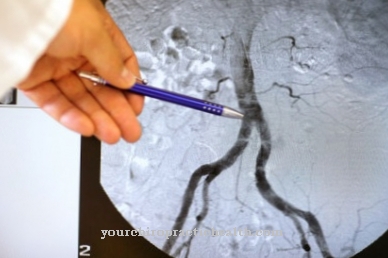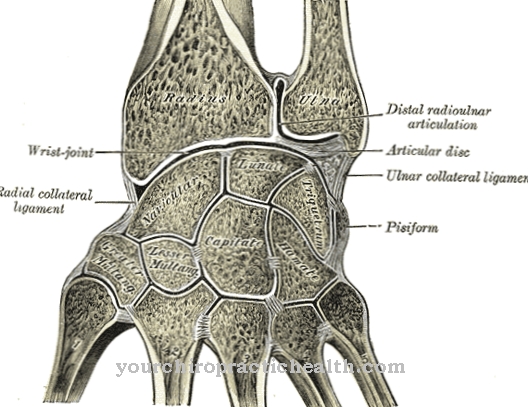At the Thalamus it is part of the diencephalon. It is composed of different core areas.
What is the thalamus
Of the Thalamus dorsalis represents a component of the diencephalon. Further sub-areas are the hypothalamus including the pituitary gland, the subthalamus and the epithalamus including the epiphysis. There is one thalamus in each half of the brain. It has a bean-shaped structure and is composed of several core areas.
These areas have a strong connection to the cerebral cortex. Apart from the olfactory tract, all ascending tracts that are important for sensitive-sensory information must be connected in the thalamus. For this reason, this area of the brain is also called the “gateway to consciousness”.
Anatomy & structure
Anatomically, the thalamus can be found in the center of the diencephalon. It is adjacent to the 3rd ventricle. The thalamus is composed of two halves. These reach the size of a pigeon egg. The area Adhaesio interthalamica mostly provides a connection between the left and right thalamus.
The thalamus is made up of over a hundred core areas, also known as the nuclei. These areas are divided into two groups. These are the specific and unspecific thalamic nuclei. With the specific nuclei there is a connection to the areas of the cerebral cortex that can be clearly delineated. After the nuclei have received sensory and sensitive impulses from the peripheral areas, they switch over to their transmission to the cerebrum.
The most important specific cores include the Nucleus ventralis posterior, which serves as a switchover point for sensitive signals for the sense of touch and depth sensitivity and the Nucleus ventralis anterolalisthat processes motor signals. This is important for higher cognitive abilities Nucleus mediales thalami, during the Nucleus anteriores thalami plays an important role in the activities of the limbic system. Further specific cores are the Corpus geniculatum mediale, which is an important control point for the auditory pathway, the Corpus geniculatum laterale, which takes on the same function for the visual pathway, and the pulvinar. This is important for memory, perception and language.In the case of the unspecific nuclei, there is only a weak connection or even no connection at all with the cerebral cortex.
Information is provided to you by the Formatio reticularis, the basal ganglia and the cerebellum (cerebellum). There is also a connection to the specific thalamic nuclei. The unspecific nuclei include Nuclei mediani and the Interlaminar nucleus. While the median nuclei have a close connection with the limbic and olfactory systems, the interlaminar nuclei are important for controlling the human state of consciousness.The unspecific nuclei have the ability to take over different areas when activated. Certain connections are important for paying attention to cognitive processes. Others, on the other hand, focus on external or emotional stimuli. Special stimuli are also sensitized. A sleeping mother can be woken up by every movement of her baby while she does not react to a passing truck.
Function & tasks
The term thalamus comes from the Greek. Translated it means "bedchamber" or "chamber". However, these terms have little to do with the functions of the diencephalon. The thalamus is a filter that precedes the cerebral cortex.
All information that arrives in this area is preprocessed before being forwarded to the cerebrum. The thalamus decides which detailed information is of importance for the body. For this purpose, the afferent (feeding) nerve cells forward information from the organism to the thalamus. There, in the specific thalamic nuclei, there is a switch to subsequent nerve cells, which leads to transmission to the cerebrum.
Switching takes place by simply processing the information, with the thalamus acting as a filter and separating unimportant information from important data. The unspecific thalamic nuclei are responsible for controlling this function. These receive their input from other areas of the brain. In this way, the decisions of the thalamus about important information in the context of the overall physical situation are coordinated.
You can find your medication here
➔ Medicines against memory disorders and forgetfulnessIllnesses & ailments
Pathological damage to the thalamus can have a significant impact on the organism. The lesions primarily affect the opposite (contralateral) side of the body. This often leads to ataxia, which is a disorder of movement coordination. Ataxia can also occur with normal muscle strength.
Another disorder is hemiparesis. Incomplete paralysis of one side of the body, such as hemiplegia, is understood by this. Stroke is one of the most common causes of hemiparesis. Another possible consequence of thalamic damage is thalamic pain, also called central pain. Lesions of the thalamus often also result in lesions in other areas of the central nervous system (CNS), which in turn lead to pseudothalamic pain.
Will the Nucleus ventralis posterolateralis Affected, this leads to disturbances of the depth and surface sensitivity. The disorder is noticeable through a feeling of heaviness in the limbs. However, extensive damage to the thalamus only occurs in rare cases. However, if they do occur, the affected people suffer from sensory and motor deficits. In addition, psychological problems arise.Other conceivable consequences of damage to the thalamus are disturbed attention, impaired sensibility, changes in personality and clouding of consciousness.













.jpg)

.jpg)
.jpg)











.jpg)